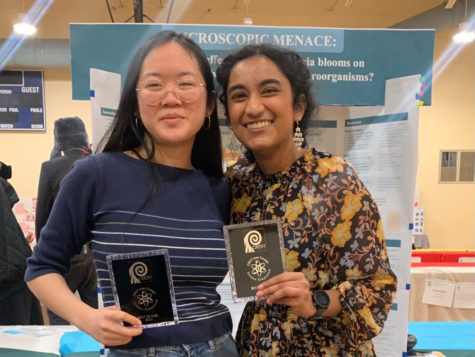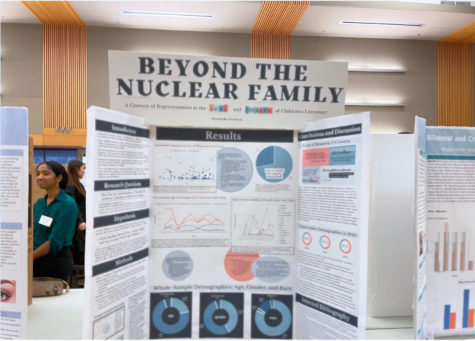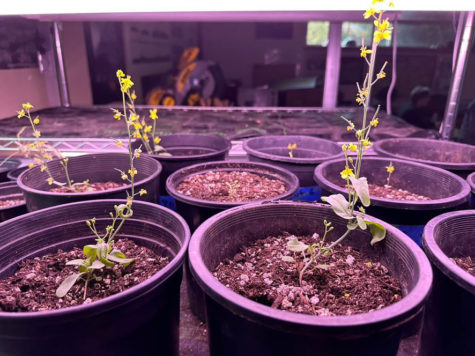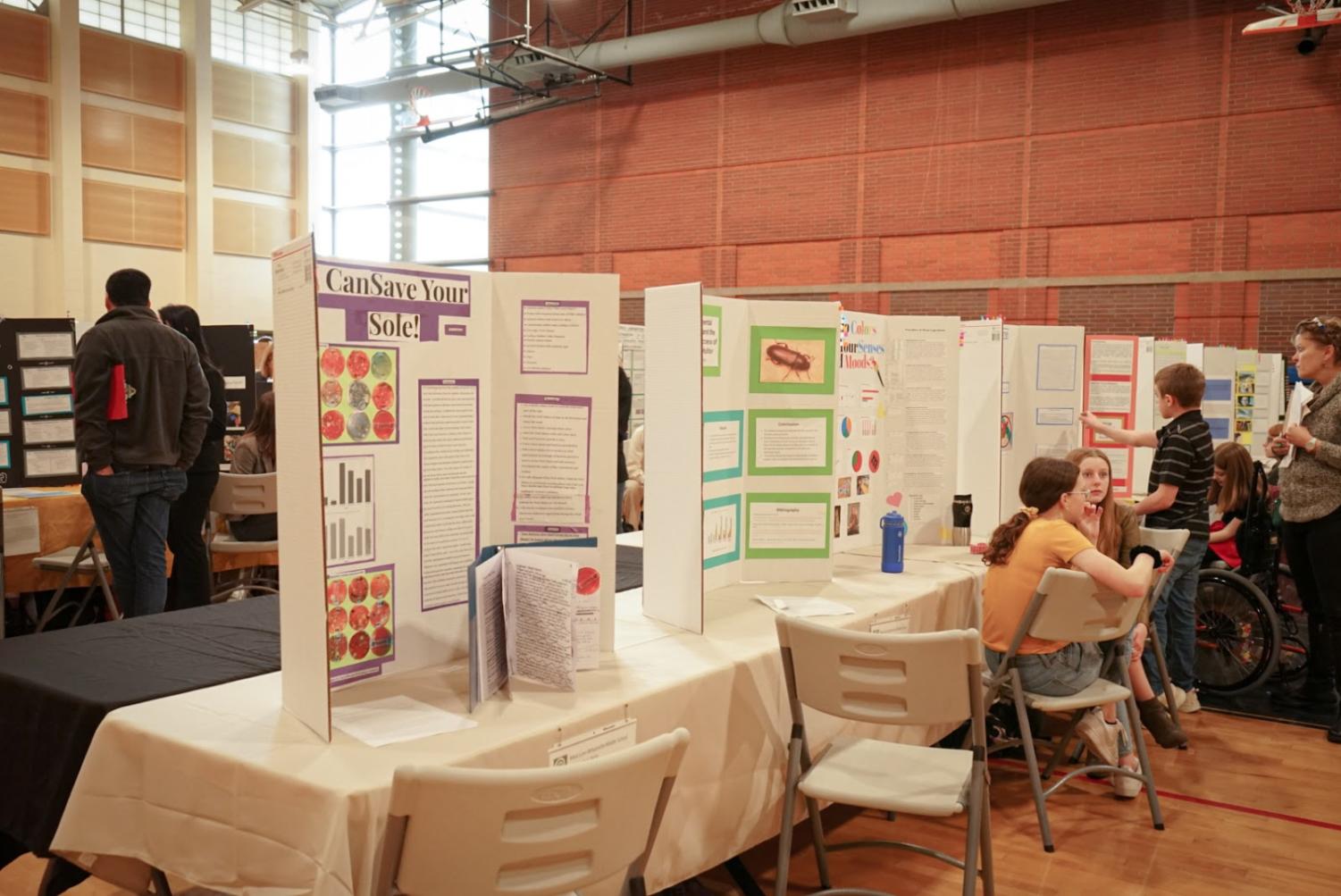Your donation will support the student journalists of West Linn High School. Your contribution will allow us to continue to produce quality content by purchasing equipment, software, and continuing to host our website on School Newspapers Online (SNO).
Getting ISEF down to a science
Which projects are advancing to the international ISEF competition?
April 21, 2023
Expanding small curiosities into bigger in-depth ideas and creations, the International Science and Engineering Fair (ISEF) allows for showcases on scientific discoveries. ISEF creates a broad range of science projects. The West Linn-Wilsonville School District (WLWV) provides ISEF coordinators and offers specific resources to aid high school students with their science projects.
The international competition for Regeneron ISEF 2023 is expected to take place from May 14—19 in Dallas, Texas. This is the world’s largest pre-college STEM competition, only open to high school students that have passed through regional and state levels of competition.
Annually, students with ISEF projects attend the district science fair. From there, select students move onto state competitions to receive awards and possibly advance onto internationals. This year, six students from West Linn High School were granted the opportunity to present their projects at the international competition.
The advancing projects that will attend Regeneron ISEF 2023 involve life science, social science, and agricultural science.
A microscopic menace
Some organisms can harm the environment without being recognized. Looking further into this issue, Uma Grover and Melinda Lin, seniors, have both had prior experience in ISEF with studying algae blooms. Last year, the duo made it to internationals with the same project, and decided to continue working on the experiment this year.
Grover and Lin studied algae blooms, which are created when toxic bacteria, known as cyanobacteria, bloom in large quantities. These blooms create toxic conditions and release harmful conditions for local ecosystems.

“We got in touch with some people at the United States Geological Survey and learned about the problem that algae blooms posed,” Grover said. “And upon hearing about that, we wanted to study that and figure out what we could do to help and contribute to the works of research already existing.”
The Willamette River’s Ross Island Lagoon is the origin of these algae blooms, which led to Grover and Lin choosing nearby sites to test and analyze the cyanobacteria. At the site, the water was stagnant and created a prime condition for cyanobacteria to grow. Grover and Lin chose sites above and below the lagoon to compare water samples.
Grover and Lin’s hypothesis was that the algae blooms would cause conditions of higher toxin levels in the water. They also hypothesized that the blooms were accompanied by conditions that were more eutrophic, or rich in nutrients, becoming more harmful for the organisms around them.
With their research over multiple months, beginning in April 2021 and still continuing with discoveries, Grover and Lin’s results supported their hypothesis. Originally, they believed that the amount of toxins in the water would directly correlate with the cyanobacteria in the water. However, they discovered that toxins were at their highest level when cyanobacteria levels were at their lowest. This led them to discover that when cyanobacteria die, the cells explode, and then the toxins get released. They also found that temperature was a way the toxins were being released, which is a new and emerging idea that was introduced in this field.
“The main thing about our results is they offer a potential alternative to predicting and quantifying cyanobacteria and their toxicity levels,” Lin said. “This is especially important because kits for measuring toxins are really expensive.”
Communities may not have access to expensive kits to measure the toxins in nearby bodies of water. Similar to the results found by this project, using temperatures to indicate the release of cyanotoxins, or melosira content, a diatom that can be associated with large algae blooms, can be sufficient as well. By having these methods, communities that cannot afford these kits can have an accessible way to measure toxins in bodies of water.
To discover these results, Grover and Lin contacted a graduate student at Portland State University. From there, they also connected and shared their findings with the United States Geological Survey and the Oregon Health Authority.
“These people have advised us on a project and were also people we could share our results with, and in hopes that it might actually help them with their research,” Grover said. “And that was really amazing how our scientific research can have a broader impact on the community.”
Beyond the nuclear family
Diversity portrayed in modern-day media is continuously expanding and changing. Annamika Konkola, sophomore, began exploring possible ISEF projects in the summer of 2022.
Konkola researched the change in diversity represented within families in best selling American children’s books within the past century, from 1922— 2022. To do this, Konkola used a word and image analysis of around 2,460 pages worth of content from 75 best seller books.
“My hypothesis was that increasingly diverse families would be featured,” Konkola said. “There ended up being few statistically significant differences over time, which indicates that there hasn’t been as much change.”

The results of this project show that the families that were portrayed in best seller children’s books remained to be mostly white, nuclear families. Konkola created a way to systemically point out and look at the gaps that are within children’s, specifically the range from kindergarten to second grade, literature. Her research included analyzing the changes in family representation using both artificial intelligence and human coding. Human coding allowed the analysis of the children’s book to be more efficient, rather than looking through each book with the human eye. However, other skills such as statistics were utilized in her research.
“It was just a lot of organization in coordinating, and then statistics,” Konkola said. “I had no background in statistics before this, so it was definitely challenging to figure out what kind of tests we would run to get data.”
Though learning new concepts can be difficult, these subjects can be applicable to real life situations. Konkola hopes to apply her project to create a change and benefit society from her findings.
“Presenting these findings to elementary school teachers and maybe comparing how libraries of teachers in different school districts, compared to these best selling books in terms of metrics of representation would be really interesting,” Konkola said.
Konkola mainly contacted Danielle Schroeder, an ISEF coordinator, to get the resources needed for the experiment. Support and encouragement for an ISEF project is administered by the coordinators, providing different ways to access certain people, labs, etc. Other contacts outside of the school district can be utilized as well.
“I was able to talk to professors in social science, and one about child development, I think she was studying about research that was similar to the kinds of questions that I was asking,” Konkola said. “I was able to get a really good grasp about this super weirdly specific niche of social science research.”
ISEF is not only a project that takes time and research outside of the classroom. Currently, students who partake in an ISEF project, regardless of where it places in the district competition, can receive half of a science credit. Next year, ISEF is expected to become a year-long class.
“It’s just a really good opportunity,” Konkola said. “I’m so glad that I have had this opportunity this year. It made me realize that the topics that I’m interested in, like sociology and social science, definitely do have a connection to science and statistics.”
An inventive solution for dry farming
Dry farming may become the future and reality for many farmers. To come up with a possible solution, Alan Kolesnikov and Grace Sato, seniors, have been working on their ISEF project together for an estimated four months. Both Kolesnikov and Sato are students who have participated in ISEF before.
Kolesnikov and Sato simulated a farm where limited water would be available, attempting to find a solution to aid dry farming. Daikon radish was used as a cover crop that would store water during the winter, due to its high water content. As springtime rolled around, other normal crops were planted that would get watered by the daikon radish as it decomposed.

“The primary thing we focused on was proving the feasibility of the theory stated,” Sato said. “We watered plants and supported them through their entire life cycle with pretty much only a daikon radish root that was decomposing in the soil.”
Dry farming is a farming technique that produces crops without irrigation. Even in states like Oregon, that receive a large amount of rainfall annually, different factors can impact agriculture. In 2022, Klamath Falls suffered from extreme dry weather, resulting in federal officials shutting off water to farmers in the region for the remainder of the season. Dry farming can offer a secure solution for situations where water supplies are not steady.
“Our project is really important with the effects of climate change coming into focus right now,” Kolesnikov said. “We’re seeing areas that are getting less and less rain. And our specific idea is extremely important for those specific areas.”
However, this project was not a simple task, Kolesnikov and Sato encountered certain obstacles. In the first experiment, there were 50 plants, with only seven plants that sprouted. The process of taking precise measurements everytime the plants were watered took around two hours, only providing minimal information and data.
For the project, Kolesnikov created two websites along with a statistical modeling program that previewed the impacts of their experiment. The program applies the strategy the project used in actual agricultural situations. Specializing in another important aspect of the project, Sato took care of the experimented plants and focused on testing the theory.
“We come from two really different backgrounds of science,” Sato said. “[Kolesnikov] was the programmer and I’m the plant nerd. I think it’s really cool how we were able to combine those things and make one project that was really greater than the sum of our parts.”
Creating a sustainable option for agricultural areas that are impacted by harsh climate can have a role in forming a future without being reliant on irrigation. Preparing with new ideas and technologies, such as Kolesnikov and Sato’s daikon radish experiment, provides a different look to solutions.
“The idea that we produce in our project and present to people is a really novel way of looking at cover crops because nobody thinks to water a plant with another dead plant,” Sato said. “It opens up a perspective to more creative solutions for climate change, and I think that’s also really important alongside the direct impact it has.”
